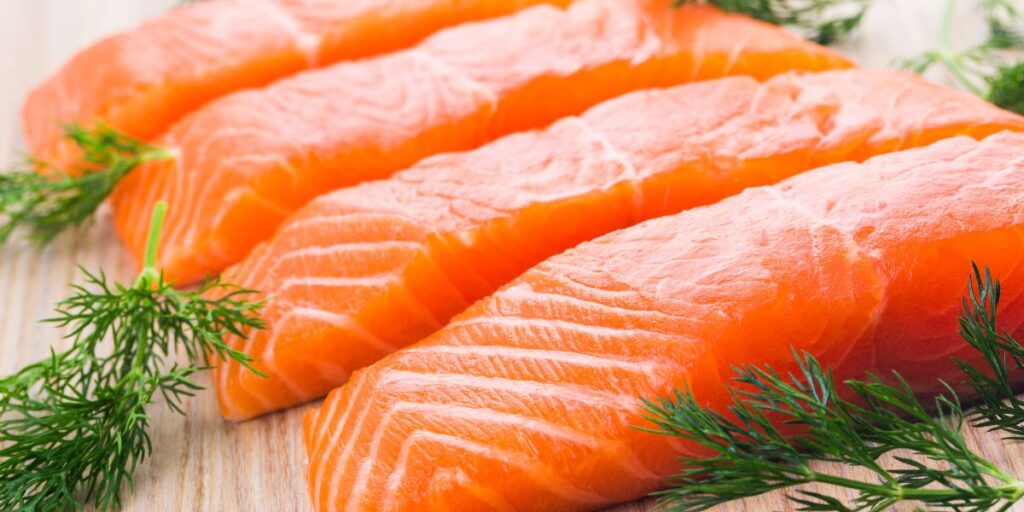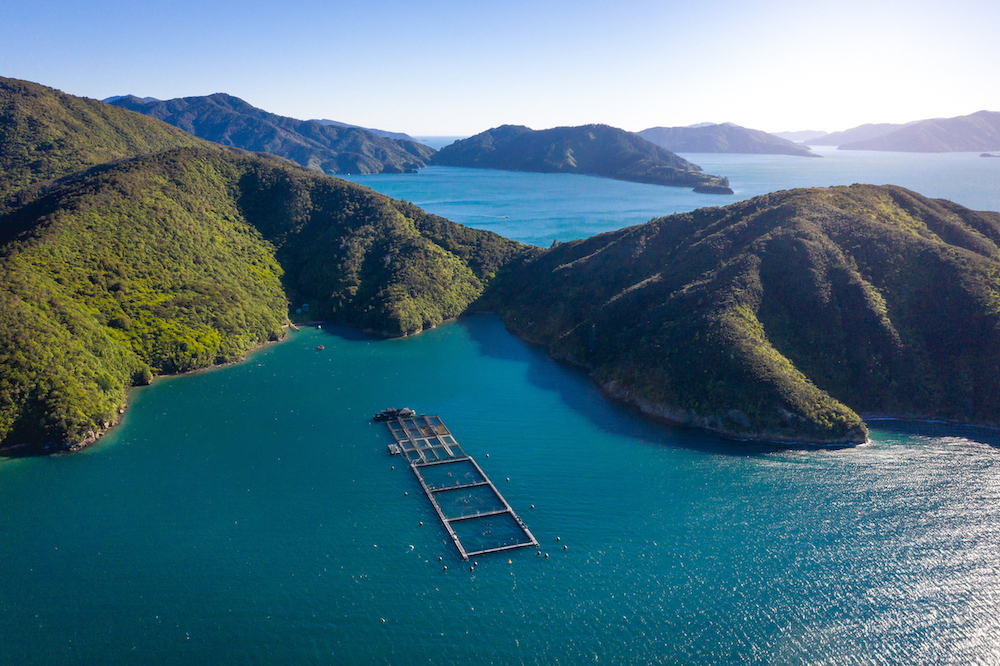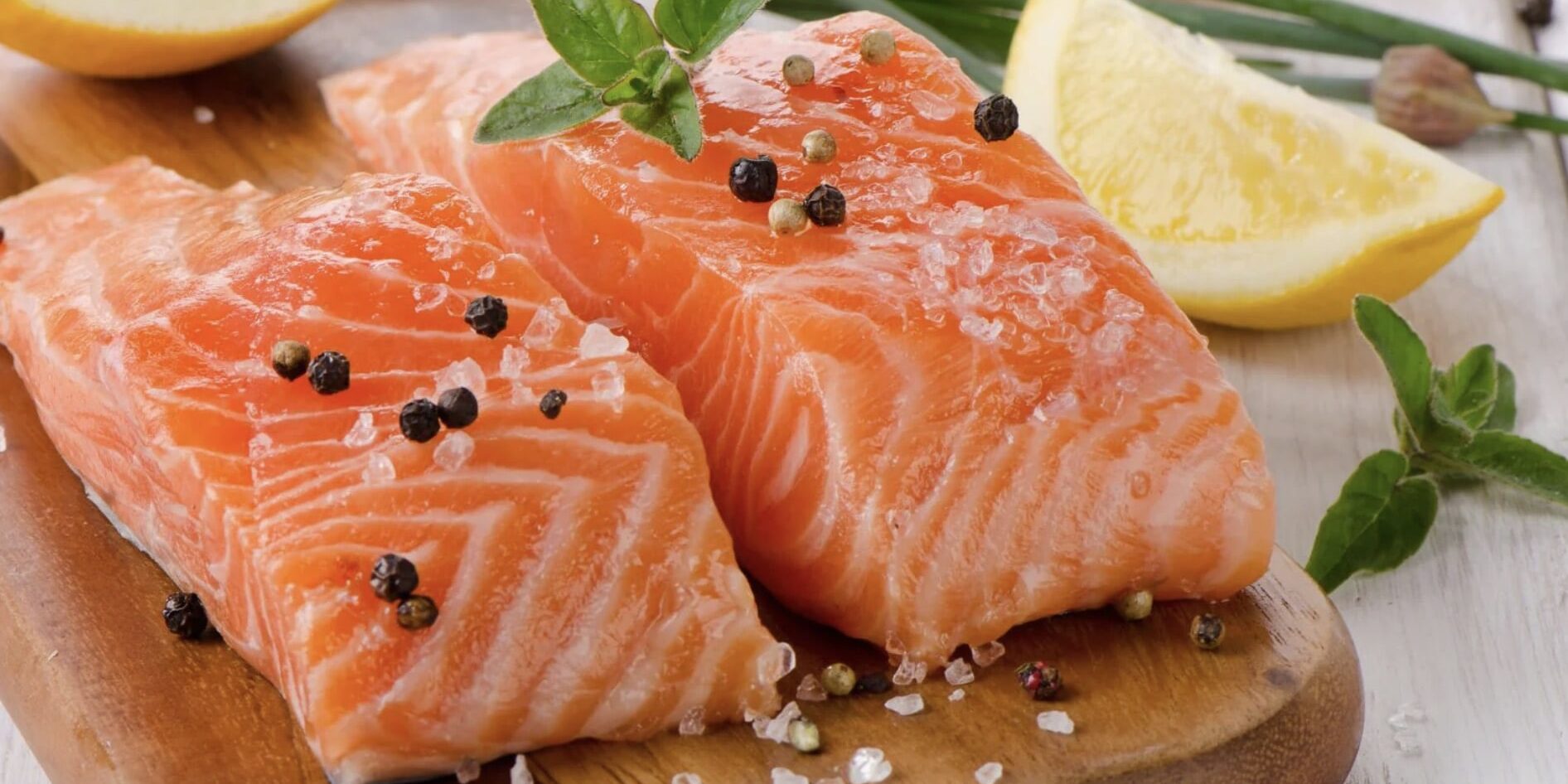If you’ve ever browsed a high-end seafood store or restaurant menu in Hong Kong, chances are you’ve come across king salmon before. King salmon is premium and delicious, with high oil content, moist and flavourful flesh. Due to its luxurious texture to taste, it is certainly going to leave an impression.
Did you know that there are two main types of king salmon, one from the south, farmed in New Zealand, and another from the north, harvested from wild waters in the Pacific Ocean. Today, we delve into the nuances between the two esteemed types of king salmon: the wild pacific king salmon (also known as chinook salmon) and the New Zealand farmed king salmon. Both are celebrated for their exceptional qualities, yet they still offer distinct experiences in terms of taste, nutrition and sustainability. Whether you’re a chef, a wholesaler, or simply a seafood connoisseur, understanding the difference helps you make smarter, more confident choices.
Origins: Nature’s Bounty vs. Cultivated Excellence
Wild Pacific King Salmon
Sourced from the pristine waters of the Pacific Ocean, particularly regions like Alaska and British Columbia, wild King Salmon (also known as Chinook) thrive in their natural habitats. These powerful swimmers migrate thousands of kilometres during their life cycle — from ocean feeding grounds to freshwater rivers like those in Alaska and British Columbia, where they return to spawn.These salmon live freely in nature, feeding on a diet of smaller fish, squid, and krill. This wild lifestyle contributes directly to their unique flavour profile and firmer texture. Because they’re constantly swimming upstream against strong currents, they develop lean muscle mass, resulting in a firm and hearty bite.Their migratory patterns and natural diets contribute to their robust health and distinctive flavour profile.
Wild Pacific King Salmon are among the largest species of salmon, growing up to 20kg or more in the wild. They have a silver-blue skin, a broad body, and noticeably leaner flesh compared to farmed king salmon. Their flesh colour can vary slightly depending on their diet, ranging from a deep coral to light pink.
Farmed NZ King Salmon
In contrast, New Zealand’s aquaculture industry has mastered the art of farming King Salmon in controlled environments. Utilizing the country’s clean, cold waters, farms like those in Marlborough Sounds produce salmon renowned for their consistency and quality. The fish are raised with meticulous care, ensuring optimal health and taste. These aquaculture farms are internationally recognised for their sustainable and high-quality practices.
Unlike their wild counterparts, farmed salmon are raised in carefully monitored ocean pens with strict controls on water quality, density, and feed. The result is a consistent environment that allows the salmon to grow steadily without the stress of long-distance migration. NZ King Salmon tend to grow up to 5–8kg on average — slightly smaller than wild salmon but with a more plump, fatty profile. Their flesh is a vibrant orange-pink, thanks to a specialised diet rich in marine nutrients. The even marbling of fat gives them their signature buttery mouthfeel.


Alaskan wild king salmon fillets
Flavour Profiles: Bold vs. Buttery
Wild Pacific King Salmon
Characterized by a rich, oceanic flavour, wild King Salmon offers a firm texture with a pronounced taste that reflects its natural diet of wild marine organisms like krill, squid, and anchovies and active lifestyle. This robust flavour is often preferred by chefs seeking a salmon that stands out in complex dishes.
Wild Pacific King Salmon has a deep, umami, ocean-forward flavour, well suited for seafood lovers who are after strong taste. As the fish holds itself very well together, cooking methods include grilled fish, hotpot and seared sushi.
Farmed NZ King Salmon
Often referred to as the “Wagyu of the Sea,” farmed NZ King Salmon boasts a mild, buttery flavour with a soft, delicate texture. The flesh has a mild sweetness, thanks to the high oil content and steady diet of marine feed. There’s less saltiness, making it more approachable for diners who are sensitive to fishy flavours.
The richness of the fish is balanced with citrus, soy, ginger, or miso. NZ king salmon is best cooked steamed and lightly pan fried. Its high-fat content provides a melt-in-the-mouth experience, making it also ideal for raw preparations like sashimi.


NZ king salmon as sashimi and sushi ingredient
Nutritional Insights: Lean Strength vs. Omega-3 Richness
Wild Pacific King Salmon
Wild Pacific King Salmon is naturally leaner, making it an excellent source of high-quality protein without excessive fat. This is ideal for those watching their calorie intake or aiming to build lean muscle mass. It is also an excellent protein source for seniors or recovering patients, especially when steamed.
Rich in essential vitamins & minerals, wild king salmon provides a broad spectrum of B vitamins (B12, niacin, B6), vital for brain health, energy production, and red blood cell formation. It also contains selenium, a trace mineral that plays a crucial role in thyroid function and antioxidant defence. Because Wild King Salmon eats krill and other sea creatures, it contains astaxanthin — a natural antioxidant that gives its flesh a deeper red colour. Astaxanthin is known for supporting eye health, skin protection, and anti-aging.
Lean and protein-rich, wild King Salmon is an excellent choice for health-conscious consumers. Its natural diet results in lower fat content and fewer calories, while still providing essential nutrients like omega-3 fatty acids.
Farmed NZ King Salmon
Thanks to controlled feeding practices, farmed King Salmon from New Zealand are rich in omega-3s, beneficial for heart and brain health. However, this also means a higher calorie count, which is a consideration for dietary planning.
Farmed King Salmon from New Zealand is often referred to as the richest natural source of Omega-3 fatty acids among all salmon types. These include EPA and DHA, essential for heart, brain and joint health. It reduces inflammation, lowers blood pressure and improve circulation, making it especially important for pregnant women, children and elderly. Its high Omega-3 oil also reduces joint stiffness and promote youthful, elastic skin.
As a comparison, NZ King Salmon can provide up to 2.5x more omega-3s than other commonly consumed Atlantic salmon species.
With its soft texture and healthy fats, it’s easy to digest and perfect for families. Thanks to the high fat content, important nutrients (including fat-soluble vitamins A, D, and E) remain stable even when cooked, making it a reliable way to get daily nourishment. A simple salmon rice bowl can be a wholesome and satisfying meal for all ages to enjoy.
Sustainability: Wild Management vs. Aquaculture Practices
Both types of salmons are known to be sustainable. For wild king salmon, the sustainability hinges on effective fishery management. Fortunately, in regions like Alaska, the governments have implemented strict regulations to ensure populations remain healthy. Ifish sources sustainability-accredited (MSC-certified) Alaskan king salmon. The MSC certification ensures that sustainability practices are followed throughout the fishery practice and supply chain management, giving consumers a sustainability promise.
New Zealand’s aquaculture industry is lauded for its sustainable practices. Farms operate with low stocking densities and avoid antibiotics, focusing on environmental stewardship and fish welfare. Certifications from organizations like the Monterey Bay Aquarium affirm their commitment to sustainability.


Image credit: https://adroit.nz/water-monitoring-solution-at-nz-king-salmon-farms/
Conclusion: Celebrating Diversity in Excellence
Both Wild Pacific and Farmed NZ King Salmon offer unique qualities that cater to different culinary preferences and nutritional needs. With exceptional taste and luxurious texture, both salmons are regarded as the most exceptional species in the vast collection of salmon types. Comparing between the two kings, wild king salmon appeals to those seeking a lean, oceanic flavour, while New Zealand’s farmed variety offers a decadently buttery experience with a lighter taste. At iFish, we recognize and celebrate the merits of both, understanding that diversity in seafood options enriches our culinary landscape.








